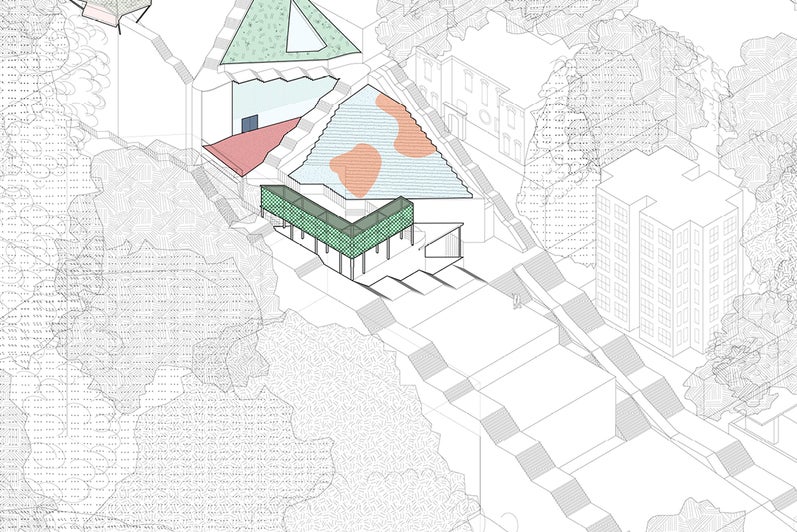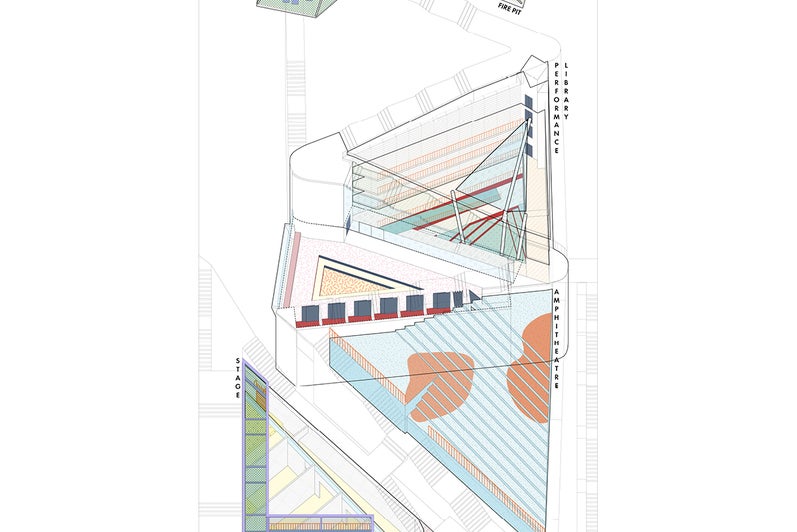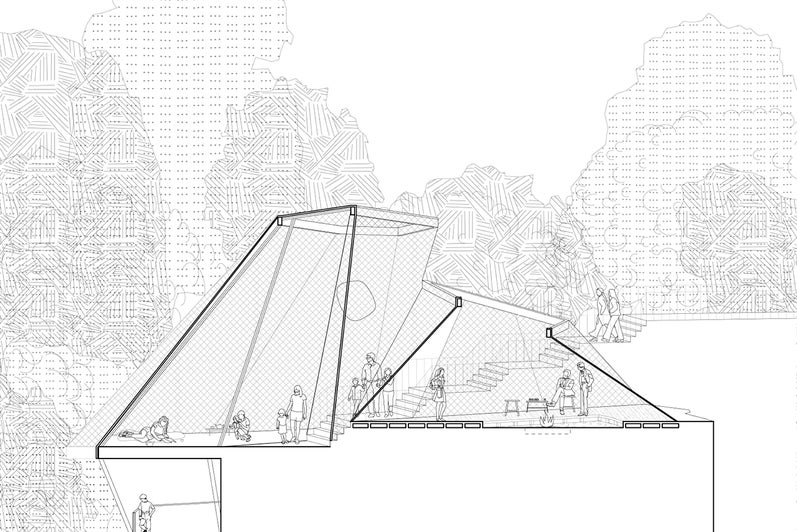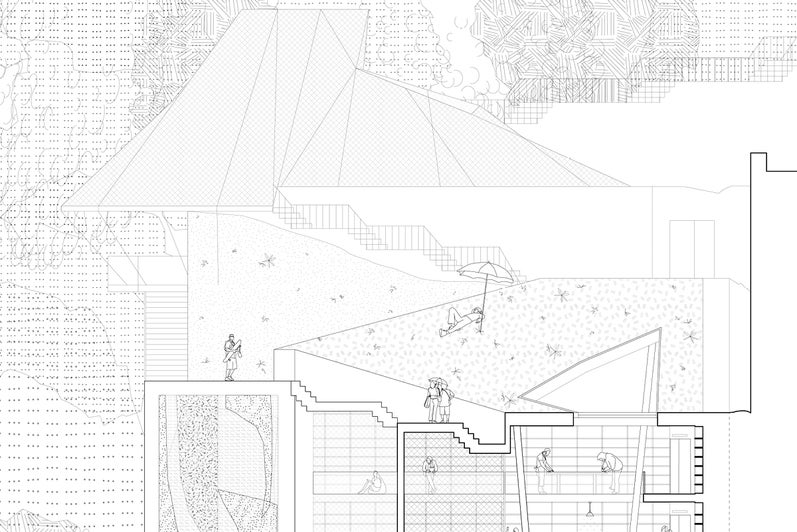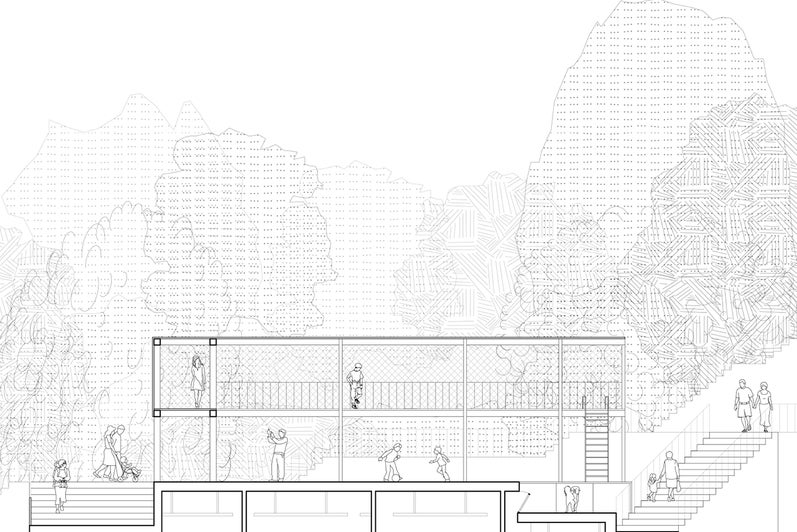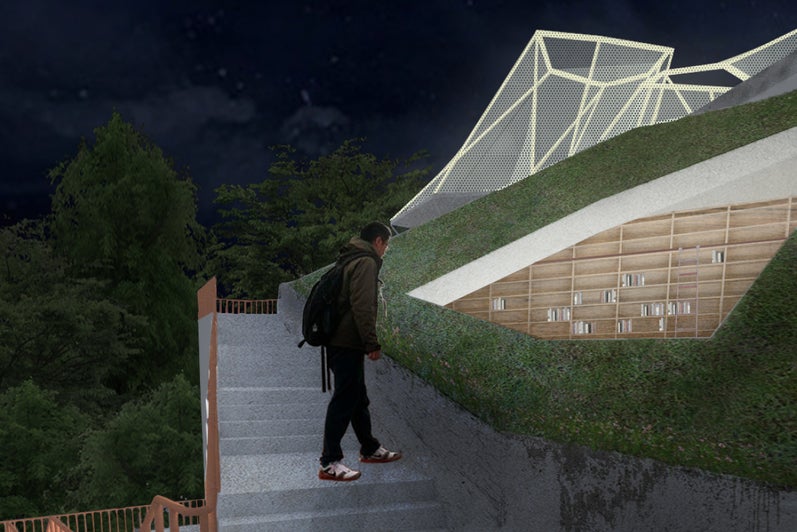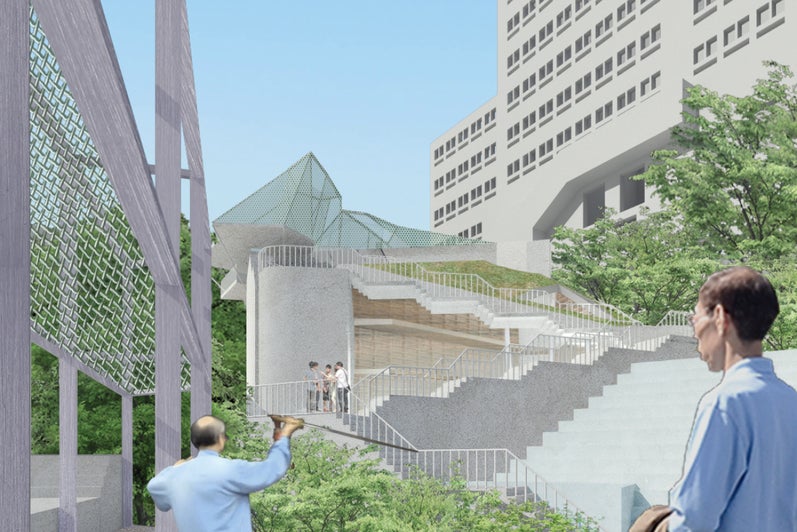Congratulations to Fion Fong, who is the recipient of The Smale Fellowship. The Smale Fellowship is an award given annually to a fourth-year Architecture student with high academic and design achievement, who shows leadership ability and the potential to play a notable role in the profession. The Fellowship honors Professor Warren M. (Bud) Smale (1924-1970) and E. Catherine Smale (1927-1991), both Architects who provided important leadership through their architectural practice and as civic and professional activists, in the realms of architecture, planning, historic preservation, and architectural education at provincial and national levels.
Fion's project, A Canyon of Public Space featured below, for ARCH 393 002 Creative Instincts & Architectural Imagination, Coordinated by Andrew Levitt. This studio is an invitation to create - students are invited to use the assignments of this studio to explore their creative instincts and learn how they can best flourish and be expressed.
A
Canyon
of
Public
Space
Hong
Kong’s
public
spaces
consist
predominantly
of
enormous
parks
and
recreation
facilities.
Other
semi-public
spaces
include
multi-storey
malls,
racecourses,
and
exhibition
centres.
These
interventions
function
at
an
intense
urban
and
commercial
scale,
making
it
difficult
for
the
human
scale
to
find
its
place
in
the
public
day
to
day.
The
aim
of
this
proposal
is
to
break
this
convention
by
inhabiting
the
abundance
of
smaller
underused
sites
that
make
up
the
residual
spaces
of
Hong
Kong’s
complex
urban
fabric.
They
are
the
spaces
hidden
physically,
in
corner
lots
behind
skyscrapers,
or
spaces
collectively
forgotten
yet
in
plain
sight,
like
the
stairs
between
freeways
or
the
alleyway
parks
between
buildings.
The
design
locates
itself
between
a
set
of
zig-zag
stairs
embedded
in
steep
topography
between
Ship
Street
and
Kennedy
Road
in
Wan
Chai.
The
stairs
pass-by
a
small
park,
a
few
shops,
and
the
historic
Nam
Koo
building,
the
haunted
house
of
Wan
Chai.
The
design
desires
to
capitalize
on
the
unique
spatial
qualities
of
the
site
which
led
to
carving
into
the
ground
and
embedding
the
program
between
the
stairs.
This
creates
a
subtler
form
and
a
more
surprising
encounter.
In
addition
to
the
main
library
program,
varying
places
for
performance
such
as
an
outdoor
stage,
sound-proof
practise
rooms,
a
small
indoor
amphitheatre,
a
firepit
and
a
tea
room
are
introduced.
The
aim
is
to
create
spaces
that
could
house
both
planned
and
spontaneous
storytelling,
in
small-scale
sites
existing
throughout
the
city.
Each
library
intervention
can
infill
their
unique
sites
with
a
specific
theme
and
the
required
amenities
to
match.
This
method
creates
a
network
of
smaller
public
spaces
in
the
dense
urban
fabric
that
are
able
to
serve
the
city
at
a
community
and
human
scale.
This
shift
to
a
smaller
scale
allows
for
a
larger
audience
to
enjoy
more
meaningful
and
specific
forms
of
public
space,
that
match
Hong
Kong’s
density,
eccentricities,
and
liveliness.
